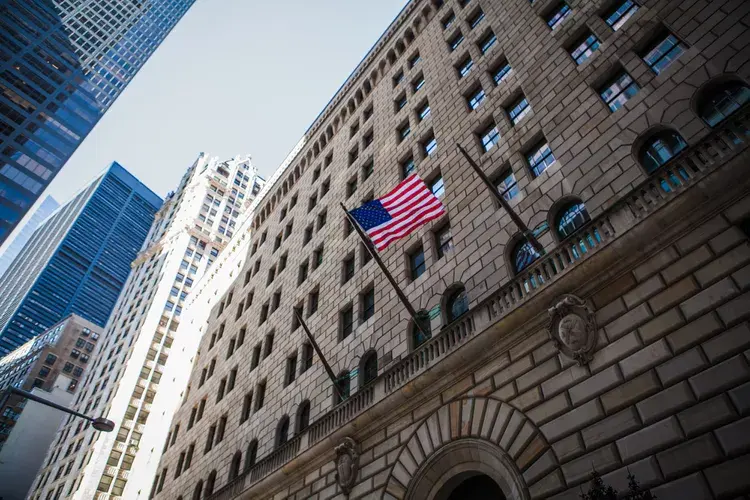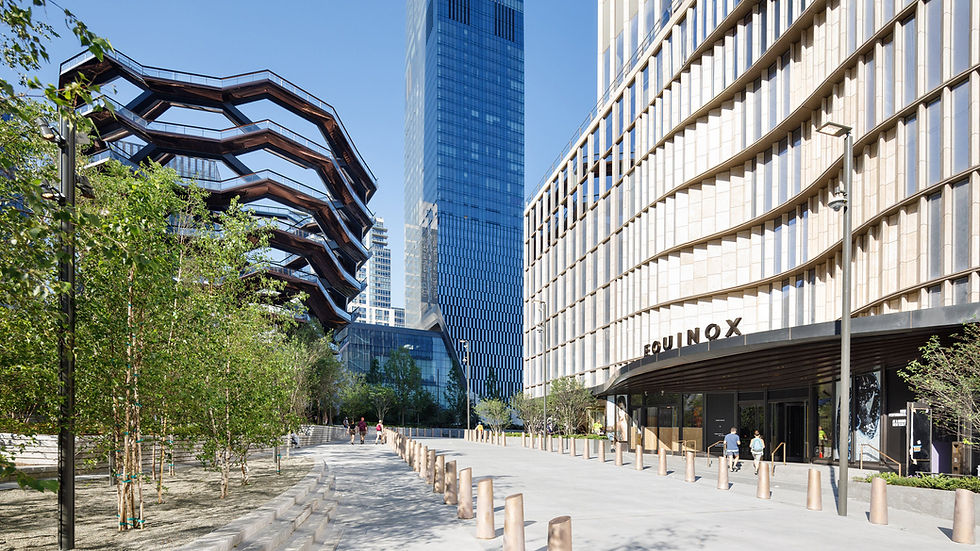Weekly Market Report - January 23, 2023
- Norman Bobrow

- Jan 23, 2023
- 5 min read
Updated: Feb 27, 2023
***
Steve Roth’s Vornado Realty Trust is considering a bid for one of the three available casino licenses at the site of Hotel Pennsylvania near Penn Station, a person familiar with the situation told the New York Post. The hotel at 401 Seventh Avenue is being demolished. Walton Street Capital managing partner Neil Bluhm, a billionaire investor in several other casino and entertainment properties, is in touch with Roth about the project. Vornado was previously reported to be considering bidding for a license in Herald Square, though bidding for one at the Penn District has been floated as a well to diversify an office-heavy project. That plan is connected to the controversial Penn Station megadevelopment.
Empire State Development approved a plan for 10 new commercial towers in the district, which will fund the renovation and expansion of the critical transit hub. The development is expected to yield 18 million square feet of new commercial space and at least 1,172 apartments. Five of the development sites are owned by Vornado. The project plan has sparked legal action. In October, community groups and tenants living in buildings facing demolition sued ESD for failing to answer basic questions about the project, alleging Vornado improperly influenced the project. The lawsuit calls on the court to annul the state agency’s approval of the project plan and its final environmental impact statement.
The state is giving out three downstate casino licenses, which has brought out a veritable who’s who of Big Apple real estate players pursuing a piece of the action. SL Green, Related Companies, the Soloviev Group, Thor Equities and New York Mets owner Steve Cohen are among those exploring bids.
***
Local Law 97 is going to be costly to New York City landlords, according to a report on projected fines when the regulation comes into effect. More than 3,700 properties may run afoul of the law and penalties could soar above $200 million as soon as next year. For owners, trying to come into compliance may be a struggle for the next few years. The study said more than 11,000 buildings will still be out of compliance by 2030 if every building reduced energy consumption by 15 percent, while more than 8,000 buildings would be out of compliance if every building reduced energy consumption by 30 percent. Building owners facing the longest odds are multifamily rentals, along with co-op and condo landlords, due to a general lack of resources.
Of buildings expected to be out of compliance next year, the study cast owners in the sector as making up more than 60 percent. That share increases to 66 percent by 2030. The clock is ticking on landlords, who have been scrambling to come into compliance with the law before the penalty phase begins. Glenwood Management has the city’s first carbon-capture rig in a residential building, even though the law doesn’t explicitly cite carbon capture as a means of reaching the goal. Alloy Development is electrifying a building by using the power of community solar panels and batteries to store intermittent output. In Williamsburg, a landlord is at odds with residents as he tries to put a lithium ion storage battery on his building’s rooftop.
***
About one-third of all commercial property debt is floating rate. Lenders usually require that these borrowers hedge against an increase in borrowing costs, through a derivatives contract known as an interest-rate cap that limits a borrower’s exposure to rising interest rates.When rates were very low, the cost of this insurance was minimal. The cap on a multimillion-dollar mortgage could be had for as little as $10,000. These hedges saved real-estate owners millions of dollars by limiting their exposure to rising interest rates in 2022. Now, many of those contracts are expiring when mortgage rates are significantly higher and the cost of this protection has skyrocketed. In some cases, renewing this protection at the old interest rate now costs 10 times as much as it did 12 months ago. When it comes time to pay up, these additional costs can wipe out a year’s worth of rental income.
The rise of remote work and layoffs in the tech and finance sectors are undermining demand for office space, forcing landlords to offer generous incentives to fill empty space. The U.S. office vacancy rate was 12.3% at the end of the third quarter, around where it stood at its peak during the global financial crisis. Even top-performing categories, like multifamily, face new challenges in the year ahead. Commercial real-estate borrowing will fall 5% across all sectors in 2023 compared with 2022. Interest-rate caps enable a borrower to avoid paying any additional interest payments beyond a fixed threshold. The need to renew this protection is an emerging threat throughout the commercial real-estate industry, but it is of particular concern in the more speculative corners of the property market, where investors borrow short-term, floating-rate debt with plans to fix up apartments, offices or retail space and raise rents fast. Addressing these concerns leaves landlords stuck with only difficult choices.
Property owners could pay prohibitively expensive new interest-rate hedges when the current ones expire, or come up with enough cash to set aside as a protection against further increases in floating rates. They could instead choose to sell their properties into a challenging market. Or they could try to refinance their loans at a higher fixed rate because borrowing costs have roughly doubled over the past year. While floating-rate loans are the norm in many situations, some real-estate owners in this predicament could have borrowed at fixed rates, but chose to bet that rates would stay low as they had for years.
***
In addition to pledging to eat better or exercise more in 2023, commercial real estate players might want to add another new year’s resolution: Learn to keep their cool in a volatile economy. That is the advice from a New York City-based bridge lender that knows how to navigate times of great uncertainty. Emerald Creek Capital experienced one of its strongest years in 2022, a year that many others were glad to put behind them. Part of the company’s success could be due to experience. Emerald Creek was born during another time of major economic turmoil: the Great Recession of 2008. It may be difficult, however, for an investor or project sponsor who has no memory of the Great Recession to remain calm. But Seidler said its experience taught Emerald Creek how to keep moving forward even when business news sites are full of troubling headlines. That mindful approach has served Emerald Creek well. Since its inception, the firm has provided nearly 500 loans for projects in almost 30 states, with $2.7B of capital deployed.
As 2023 begins, Seidler acknowledged that rising interest rates continue to concern today’s borrowers. That mindful approach has served Emerald Creek well. Since its inception, the firm has provided nearly 500 loans for projects in almost 30 states, with $2.7B of capital deployed. As 2023 begins, Seidler acknowledged that rising interest rates continue to concern today’s borrowers. Market rate, tax class-protected and mixed-use properties with a value-add play continue to be a preferred asset class, as do industrial outdoor storage spaces that can help ease supply chain disruptions, he said. Meanwhile, capital-intensive assets such as large office buildings or regional malls are less attractive right now. He noted that the firm has continued to provide loans through every economic cycle since 2009, including during the early turbulent days of the pandemic. Overall, Seidler said the key to success in 2023 will be to maintain a cool head and be ready to take advantage of opportunities as they arise.









Comments